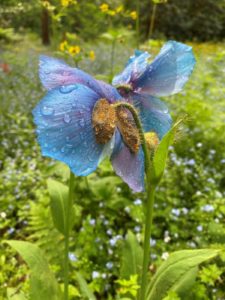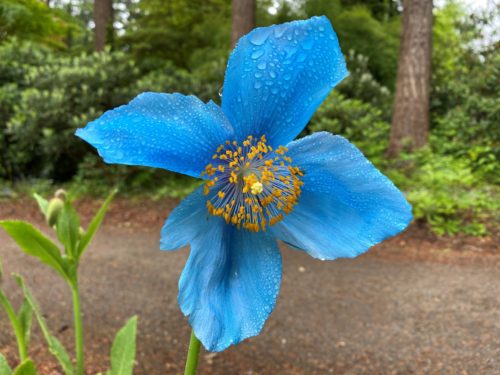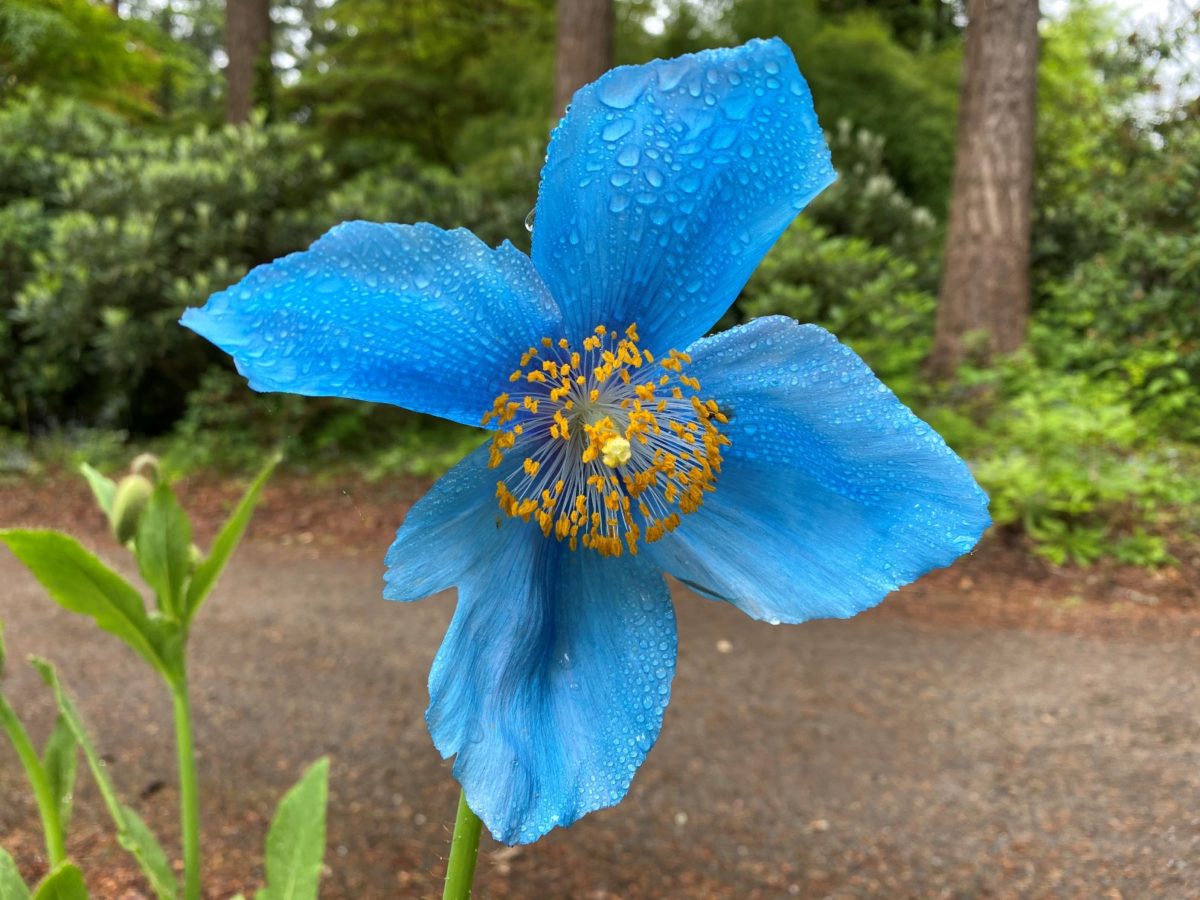by Atsuko Gibson
I think we all remember when we saw a Himalayan Blue Poppy for the first time. For me, it was in Scotland, where I spent 3 months for my horticultural internship in 2008. Since then, I have been drawn to the clear sky-blue flowers every time I have seen them, just like you. Upon my return from the internship, I obtained some blue poppy seeds and tried to grow them in northwest Arkansas where I attended the University of Arkansas for my horticulture degree. I didn’t know better and should have done more research. Blue poppies come from alpine regions of the Himalayas, so they dislike summer heat. The triple digit heat of Arkansas was not a cup of tea for these plants used to cool summers.
Upon my graduation, I moved to Pacific Northwest and got a job at the RSBG. You can imagine my excitement when I walked through the garden for the first time and discovered that the RSBG has a ‘Blue Poppy Meadow’! Then I learned that even in the Pacific Northwest they are a bit tricky to grow. Ten years have passed since I moved here and began working for the RSBG. I think I can now say I know how to keep them happy.
As I mentioned, blue poppies come from alpine regions, which means their roots are used to being exposed to cool runoff from melting ice during the growing season. I have heard many stories about blue poppies being weeds in Alaska and Scotland, where the summer temperature rarely exceeds 75 F. If you live in a place where summer temperatures regularly exceed 90 F, you will not be able to grow them successfully, unless you live at a high elevation or have a greenhouse with a cooling mechanism.
Once you obtain your plants, choose a site where they are free from root competition in partial shade.

Morning sun is okay, but definitely avoid the hot afternoon sun. Filtered sun throughout the day would be fantastic. You could avoid root competition by burying a tub, sink, kiddie pool, or even a large plastic pot (like the ones trees are sold in) in the ground. Fill the container with rich moist soil, a mixture of bagged potting soil and pure compost works well, and plant your blue poppies. They want their roots to grow in rich soil that never dries out. Be sure to keep up with watering during the growing season. Don’t use soil that is too heavy with clay, otherwise the crown will rot. An application of slug bait early in the season when they are waking up from their dormancy is beneficial.
Blue poppies are also heavy feeders. You can use either slow release granular fertilizer or liquid fertilizer. In the nursery, we use liquid fertilizer once a week during the growing season, as well as the slow release granular fertilizer when they are potted.
 We offer the cultivar called ‘Lingholm’ , which is a well-known fertile hybrid that is not as fussy as other Meconopsis species and cultivars. Over the years this selection forms a large clump and produces a number of flowers from April to May. We have found that planting them in the ground in late summer/early fall or in early spring has the most success. If your blue poppy blooms in the first year after being planted, it is best to clip off the flower stalk to give more energy toward root expansion rather than flower/seed formation. (I know how hurtful it is to cut off the flower!)
We offer the cultivar called ‘Lingholm’ , which is a well-known fertile hybrid that is not as fussy as other Meconopsis species and cultivars. Over the years this selection forms a large clump and produces a number of flowers from April to May. We have found that planting them in the ground in late summer/early fall or in early spring has the most success. If your blue poppy blooms in the first year after being planted, it is best to clip off the flower stalk to give more energy toward root expansion rather than flower/seed formation. (I know how hurtful it is to cut off the flower!)
Finally, if you have killed blue poppies in the past, join the club. I have lost some at my personal garden too, after they have grown well for 3 years. Many will form a nice big clump and last for years, but losing some percentage is a risk you should be prepared to accept. At the RSBG, we replenish the Blue Poppy Meadow every year with new seedlings, but there are still many of the original plants from the initial 2009 installation as well. If you have not already done so, be sure to visit us in mid-April to mid-May for the peak blue poppy viewing season.
Great resources:
Blue Heaven: Encounters with the Blue Poppy by Bill Terry
The Genus Meconopsis by Christopher Grey-Wilson

